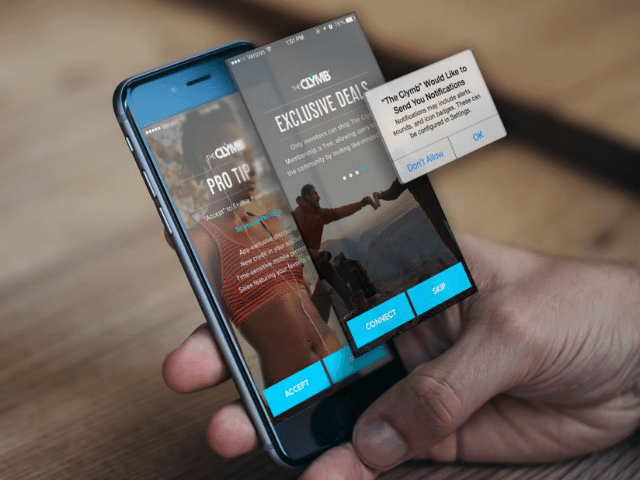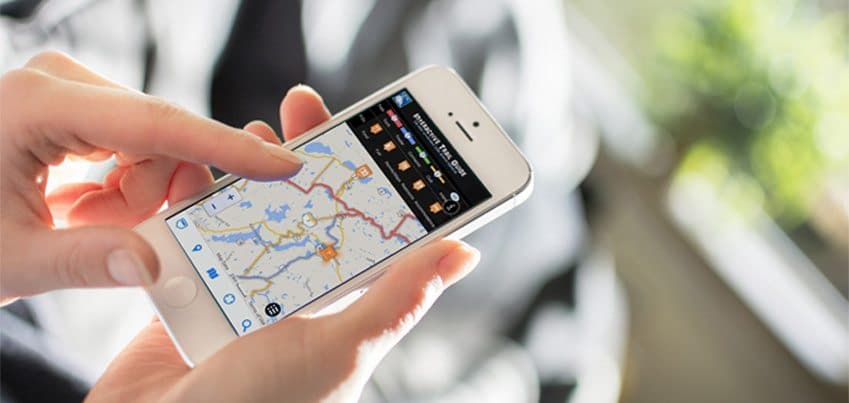While mobile technology has allowed us to break down geography and stay connected from anywhere, location is proving to be more important than ever.
For many categories of mobile apps, personalization, context, and location are the trifecta of exceptional user experience. A personalized and contextually relevant experience is more compelling to users, and increasingly, location is a factor that enhances personalization and makes the user experience more relevant.
![]()
As the Internet of Things (IoT) gains traction, location is becoming even more important. According to TechTarget:
“Location is a vital dimension of the IoT concept that encompasses the ability of ‘things’ to sense and communicate their geographic position. In this context, location acts as an organizing principle for anything connected to the Internet.”
Companies are realizing the value of having mobile apps with location-based features, and there are a number of options to accomplish this. We’re going to go into the big 3 – BLE/Beacons, WiFi, and GPS – and in what scenarios they work best in.
Location-Based Technologies For Mobile Apps
1. Bluetooth Low Energy (BLE) & Beacons
Bluetooth Low Energy (also called Bluetooth LE or Bluetooth 4.0) is the power- and application-friendly version of Bluetooth that allows for connectivity between devices and beacons. BLE is already used widely and is the basis for Google Eddystone and Apple’s iBeacon. Beacons work in tandem with mobile apps to trigger particular messages or actions based on rules, such as triggering a push notification when a user is within a certain distance from a beacon.

Advantages of Bluetooth Low Energy
- Standard protocol and ability to work across platforms and devices
- Well documented and standardized app development architecture
- Very low power usage to preserve device battery life
- High accuracy via proximity detection (message triggering based on user’s location in relation to a beacon)
- Best option for context-aware messaging
- Widely accessible technology
- Opt-in (requires user consent)
Disadvantages of Bluetooth Low Energy
- Lower range than GPS
- Not ideal for outdoor environments
- Requires a mobile app
Use Cases for BLE & Beacons
- Indoor environments
- “Micro-location” activities
- Tracking specific customer data
![]()
2. WiFi
WiFi works by leveraging existing WiFi infrastructure to detect devices that have WiFi turned on in order to pinpoint the location. This method has been used for sending push notifications and other relevant information to customers based on their location for a while now, in industries ranging from retail to hospitality.
Advantages of WiFi
- Widely accessible as all mobile devices are able to connect to networks
- Stores/companies with WiFi networks in place have the technology to use it for engaging customers
- Can be used without an app
Disadvantages of WiFi
- There are concerns with both privacy and potentially even relevance as consumers are not explicitly asked permission (no opt-in)
- Not a good option for context-aware messaging on a granular level (for example, sending specific messaging in-aisle)
Use Cases For WiFi
- Indoor environments
- Deliver general mobile content
3. GPS (Geofencing)
Geofencing makes use of GPS technology to pinpoint a user’s location in proximity to a given area. Using the coordinates from a user’s device, messages and actions can be pushed to users devices when they enter a predetermined area.

Advantages of GPS
- Widespread technology, which means it’s highly accessible
- Range is unlimited
- Opt-in (requires user consent)
Disadvantages of GPS
- GPS requires a lot of power and therefore drains mobile device batteries quickly
- Lacks accuracy indoors as it is susceptible to obstruction
- Less accurate for “micro-location” proximity based activities
Use Cases for GPS
- Outdoor environments
- “Macro-location” activities (wider range)
- Messaging to drive foot traffic to location
BLE and Beacons: The Future of Location-Based Tech for Mobile Apps?
The comparison between BLE, WiFi, and GPS is not a new one. But looking at location-based mobile technologies in the context of the Internet of Things and the ever-increasing importance of personalization is a challenge that companies are still struggling with.
With IoT, the interaction between devices and things is a fundamental necessity. Because of this, very sophisticated segmentation and hyper-local, context-aware technology are important. A device needs to know exactly what it is communicating with, meaning there needs to be a way to differentiate between things within the network. Beacons are by far the most effective means to accomplish this in comparison to WiFi or GPS.
Beacons are also the best available technology to facilitate indoor location positioning on a more granular scale; provide hyper-relevant, personalized messaging to users; and gather more detailed user intelligence.
This said, choosing the right location-based mobile technology for your company really depends on what you are trying to accomplish. In many cases, a combination of these technologies is ideal.
Ultimately, as IoT and personalization evolve and become a user expectation, beacons and BLE technology will play a more significant role. The capabilities they provide in terms of hyper-localization, context-awareness, and segmentation based on user behaviour is simply unmatched by other technologies.


